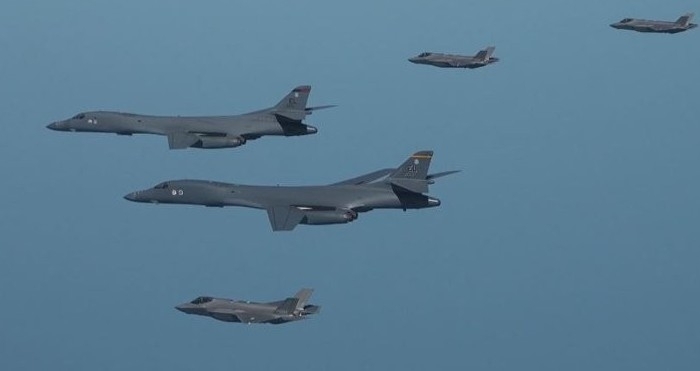
A Show of Force Amid Growing Tensions
In response to North Korea‘s recent missile test, the United States, South Korea, and Japan conducted a joint military exercise over the Korean Peninsula on Sunday. The drill featured a B-1B long-range bomber deployed by the US, accompanied by fighter jets from South Korea and Japan. This military maneuver demonstrates the three nations’ commitment to strengthening regional security. It also addresses the increasing threat posed by North Korea’s missile and nuclear advancements.
North Korea’s New Missile Test: A Step Forward in Technology
Thursday’s missile test by North Korea marked a significant milestone for the country’s missile program. North Korea launched its newly developed Hwasong-19 intercontinental ballistic missile (ICBM), which flew higher and remained airborne longer than any of its previous missile tests. North Korean leader Kim Jong Un touted the test as a necessary response to foreign threats. This signaled that the country’s nuclear missile capabilities are improving. This test was the first ICBM launch in nearly a year and showcased progress in North Korea’s technological ambitions.
Joint Drill Highlights Growing Alliance and Preparedness
In response, the US military deployed a B-1B bomber to conduct joint aerial exercises with South Korean and Japanese fighter jets. The South Korean Joint Chiefs of Staff emphasized the operation’s significance. It reflects the unwavering resolve of the three nations to confront North Korea’s escalating missile threats. This drill marks the second trilateral training session in 2023, and it underscores the strengthened defense cooperation among the allies in the face of increasing regional threats.
The Bigger Picture: North Korea’s Technology and Regional Implications
Despite the progress demonstrated by North Korea’s missile test, experts remain cautious about the country’s ability to develop a fully functional ICBM. The missile should be capable of delivering nuclear strikes to the US mainland. While the Hwasong-19 missile appears formidable on paper, its practical application in a combat situation remains unclear. Nonetheless, North Korea’s growing missile capabilities are putting the international community on high alert.
Meanwhile, the US has historically responded to North Korean missile tests with visible military assets stationed near the Korean Peninsula. Assets like bombers and aircraft carriers are used. These actions, often seen as provocations by Pyongyang, are typically met with harsh rhetoric from North Korea. They view them as part of a larger strategy to exert US influence in the region. The missile test also coincides with North Korea’s increasing support for Russia in its ongoing conflict with Ukraine. This adds another layer of international scrutiny to the situation.
Looking Ahead: The Future of US-North Korea Relations
As tensions persist on the Korean Peninsula, the trilateral military cooperation between the US, South Korea, and Japan remains crucial in maintaining regional stability. With North Korea continuing to develop its missile capabilities, the allies’ joint efforts reflect their determination to counter the growing threat. Additionally, with the US presidential election fast approaching, North Korea’s strategic calculations could shift. This adds another level of complexity to an already volatile situation.











Leave a Reply
You must be logged in to post a comment.